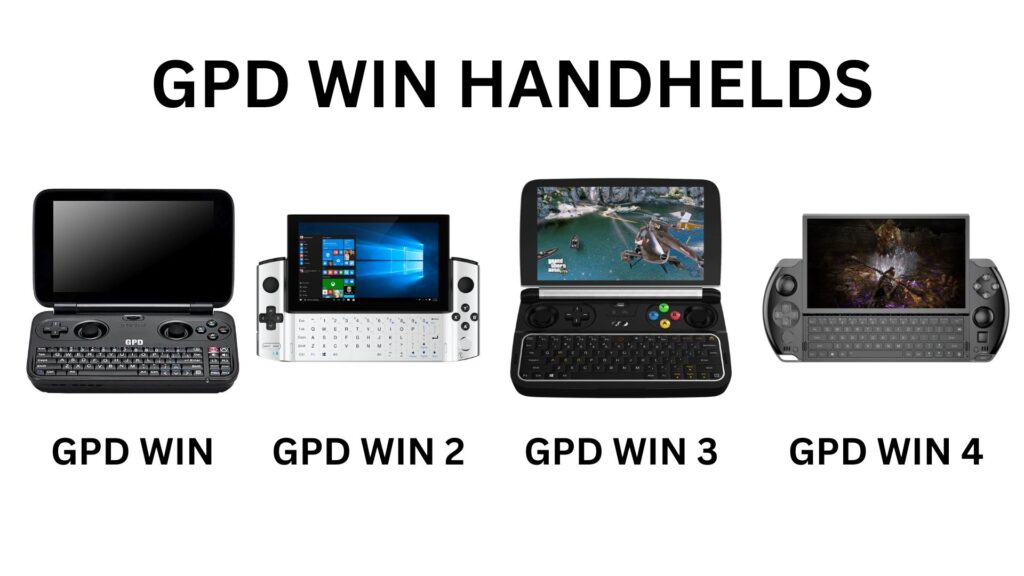The world of gaming often fixates on the thunderous releases of home consoles and the ever-escalating power of desktop PCs. Yet, a quieter, more personal transformation has been unfolding in the palms of gamers worldwide: the evolution of the handheld gaming computer. This movement, driven by dedicated enthusiasts and innovative companies like GPD, AYANEO and ONEXPLAYER, showcases a unique appeal that often thrives beyond the mainstream spotlight. Let’s delve into the fascinating facets of this handheld gaming PC evolution, exploring its dedicated fanbase, its subtle yet significant advancements, and why these pocket-sized powerhouses continue to gain momentum.
The appeal of a portable gaming PC lies in its inherent promise: true PC gaming untethered from the desk. This resonates deeply with a specific segment of the gaming population. It’s the individual who values ultimate portability, the freedom to jump into their favorite titles on their daily commute, during a lunch break, or while traveling abroad.
It’s also the PC gaming aficionado who wants to liberate their extensive game libraries from the confines of a stationary setup, bringing the vast worlds of Steam, GOG, and beyond wherever life takes them. This focused appeal, catering to distinct needs and desires, contributes to the somewhat understated nature of this evolution compared to the broader, more generalized marketing blitzes surrounding traditional gaming platforms. The core desire is to experience the depth and breadth of PC gaming in a form factor that fits in your hands, offering a level of flexibility and personal control unmatched by conventional consoles.
A Brief History: Handheld Gaming PC Evolution Begins
The evolution of the handheld gaming computer, while seemingly a recent phenomenon to some, has roots that stretch back. GPD is arguably a key pioneer in this space, with the original GPD WIN 1 released in 2016 bravely debuting a clamshell design housing a full Windows operating system and integrated gaming controls. This bold move laid the foundation for the modern portable gaming computer.
Subsequent GPD models, including the refined GPD WIN 2 and the increasingly powerful GPD WIN 3, further solidified the concept with slide up screen to reveal the min keyboard. The GPD WIN 4 continued this evolution keeping the sliding screen, offering a more streamlined design. The GPD WIN MAX series, including the original and the larger GPD WIN MAX 2 2025, explored a more laptop-like form factor with integrated gaming controls, appealing to users seeking greater versatility for both gaming and productivity. The more recent GPD WIN Mini 2025 doubled down on ultra-portability without sacrificing significant performance.
Later, ONEXPLAYER and AYANEO entered the arena with larger, high-resolution screens and powerful internals, each company contributing their unique vision to the handheld gaming computer landscape. This steady progression, driven by these dedicated companies, has been instrumental in shaping the current market. The AYANEO 3 for example is the first handheld gaming PC evolution with modular controls.
The Strength of Community: Passion in Your Pocket
Fueled by a shared passion for gaming on the go, the communities surrounding handheld gaming computers are often incredibly vibrant and closely knit. Online forums buzz with discussions about optimal settings for running specific games on devices like the GPD WIN 4 2025, hidden indie gems that shine on the smaller screen of the GPD WIN Mini 2025, and the latest hardware advancements from manufacturers like ONEXPLAYER.
Discord servers become virtual meet-up points for sharing tips on tweaking performance, discussing custom software configurations, and offering enthusiastic recommendations for both hardware and software. This strong sense of community is a vital engine driving the evolution of the handheld gaming computer, with word-of-mouth and shared excitement often proving more influential than massive advertising campaigns. These dedicated players, often early adopters and vocal advocates, play a crucial role in shaping the perception and growth of the platform through their collective knowledge and unwavering enthusiasm.
Innovation Without the Echo Chamber: Quietly Pushing Boundaries
The evolution of the handheld gaming computer is characterized by a constant stream of innovation, often occurring with less mainstream fanfare. Companies like ONEXPLAYER, with their focus on larger, high-resolution screens and powerful internals in devices like the ONEXPLAYER X1 Pro, and GPD, consistently pushing the limits of miniaturization in devices like the GPD WIN Mini 2025 and the unique sliding-screen design of the GPD WIN 4 series, are prime examples.
These manufacturers are driven by a desire to meet the specific demands of their audience, often resulting in cutting-edge designs and functionalities that might not always capture the attention of the broader gaming press until they become undeniable. This dedication to innovation, often driven by direct feedback from their passionate user base, is a hallmark of this quiet power shift. They are constantly experimenting with new form factors, more efficient cooling solutions, and increasingly powerful processors to deliver a true PC gaming experience in an ever-shrinking chassis.
The “My Own World” Factor: Gaming in Solitude
There’s an undeniable intimacy to portable gaming on a handheld gaming computer. Often a solitary experience, nestled in your own personal space, it offers a unique form of escapism. Whether you’re lost in a sprawling RPG on your GPD WIN MAX 2 2025 during a long commute or exploring a new indie gem with headphones on your GPD WIN Mini 2025 in the quiet of your own home, the experience is deeply personal.
This inherent privacy might contribute to the evolution of the handheld gaming computer somewhat outside the constant noise and spectacle of mainstream gaming culture. It’s a focused, individual experience, often prioritized over the shared, social aspects of console gaming, allowing for a deeper level of immersion and personal connection with the virtual worlds being explored.
Bridging the Gaming Divide: A Hybrid Approach
The handheld gaming computer occupies a fascinating intersection within the wider gaming landscape, seamlessly blending elements of PC gaming and console gaming. Devices like the versatile ONEXPLAYER X1 Pro, capable of transforming from a portable gaming PC to a tablet and even a laptop with the addition of a keyboard, perfectly exemplify this hybrid nature.
These devices offer access to vast PC game libraries – from AAA titles on Steam to indie darlings on GOG – while providing the tactile controls and portability traditionally associated with handheld consoles. This unique positioning, straddling established gaming ecosystems, might make the evolution of the handheld gaming computer a less easily defined entity in mainstream discussions, as it doesn’t neatly fit into traditional gaming categories.
The Mainstream Embraces the Pocket: A Shifting Landscape
Interestingly, the “silent” nature of the handheld gaming computer evolution is beginning to see some louder echoes as mainstream players recognize its potential. Valve’s Steam Deck has garnered significant attention, offering a more accessible gateway to portable PC gaming for a broader audience. ASUS, with their ROG Ally, is also making waves, leveraging their PC gaming expertise in a handheld form factor.
While these mainstream entries bring increased visibility to the category, they often operate on a different scale and with a different focus than the enthusiast-driven innovations from smaller companies. The core difference often lies in the target audience, with AYANEO, GPD and ONEXPLAYER frequently catering to a more dedicated and technically savvy user base.
The Long Game: A Sustainable Evolution
Perhaps the evolution of the handheld gaming computer, now with more prominent voices joining the chorus, is a gradual but sustainable process. As technology continues to miniaturize powerful components, improve battery efficiency, and refine ergonomic designs, portable gaming PCs are poised to become an increasingly significant segment of the gaming landscape, potentially stepping more fully into the mainstream spotlight as their capabilities and appeal broaden. The continuous advancements in mobile processing power and cooling solutions suggest a future where the performance gap between handhelds and traditional PCs continues to shrink.
The “Good Enough” Argument: Satisfying a Specific Need
For many dedicated users, the performance and unique experience offered by these handheld gaming computers are precisely what they need. They may not require the absolute bleeding-edge specifications of top-tier consoles or gaming PCs.
The balance of portability, power, and versatility offered by devices like the GPD WIN 4 2025 or the ONEXPLAYER ONEXFLY F1 Pro is “good enough,” and this satisfied user base continues to fuel the evolution of the handheld gaming computer without necessarily demanding widespread mainstream acknowledgment. They appreciate the ability to play their existing PC game libraries on the go and often prioritize this flexibility over chasing the absolute highest graphical fidelity.
The evolution of the handheld gaming computer is a testament to the power of niche appeal, passionate communities, and consistent innovation. Evolving beyond the immediate glare of the mainstream spotlight, these pocket-sized powerhouses offer a unique and compelling way to experience PC gaming on the go, quietly carving out an increasingly important space in the hearts and hands of gamers worldwide.
What are your thoughts on the quiet power shift in handheld PC gaming? What unique aspects draw you to these portable gaming computers like the GPD WIN Mini 2025 or the ONEXPLAYER X1 Pro? Share your experiences and insights in the comments below!

















